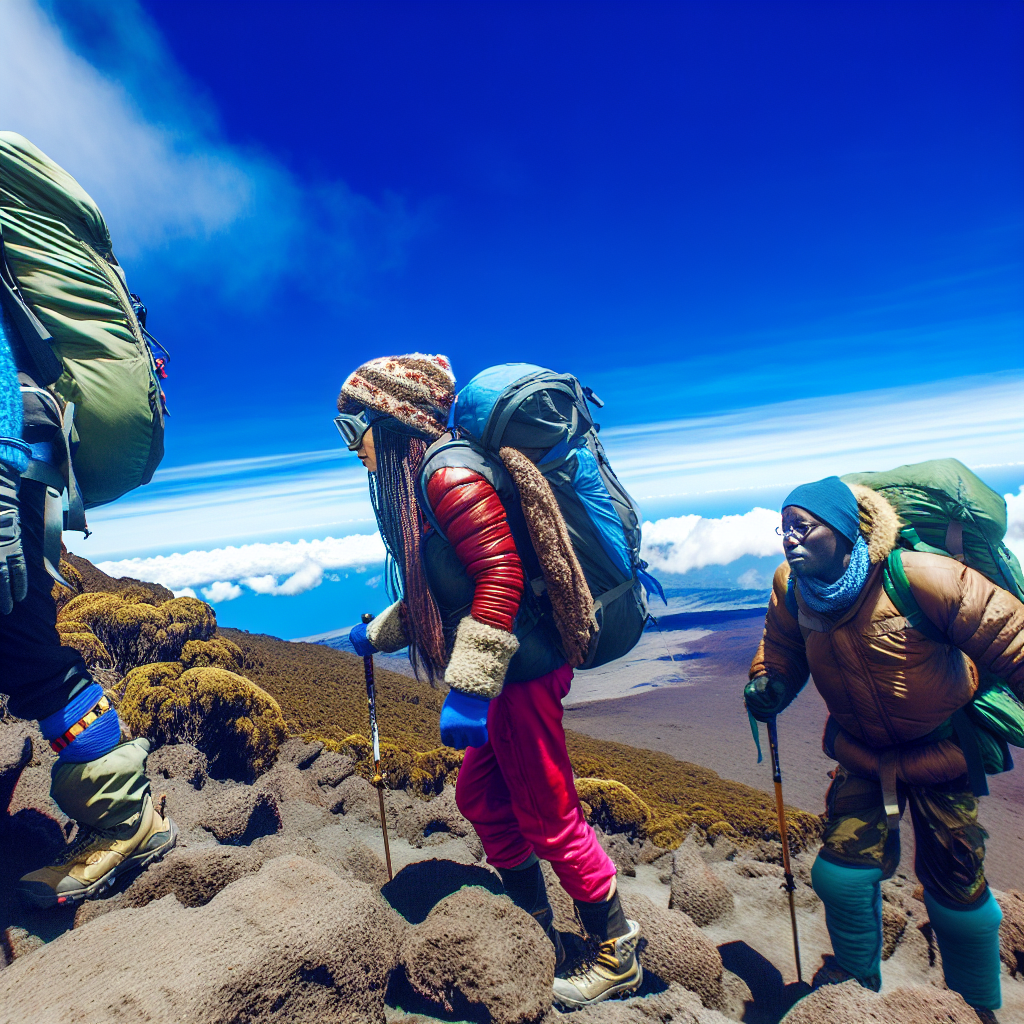Towering over the African landscape, Mount Kilimanjaro stands as a testament to the human spirit of adventure and determination. In the following article, we will explore the physical and mental challenges of climbing this legendary peak, and the rewards that come from pushing one’s limits to reach the summit. Embark on a journey of self-discovery and exploration as we delve into the world of conquering Kilimanjaro.
Heading 1: Preparation is Key: Physical and Mental Conditioning
Embarking on the journey to climb Kilimanjaro is no small feat. It requires not only physical strength but also mental resilience. To prepare for this challenging adventure, you must focus on both your physical and mental conditioning.
Physically, it’s crucial to build up your endurance and strength through regular exercise. This could include activities such as hiking, running, cycling, and strength training. Additionally, practicing with a fully loaded backpack will help simulate the weight you’ll be carrying on the mountain.
Mentally, preparing for Kilimanjaro involves cultivating a positive mindset and resilience. Visualizing yourself reaching the summit and overcoming obstacles along the way can help boost your confidence and motivation. Techniques such as meditation, mindfulness, and positive affirmations can also help calm your mind and reduce anxiety.
Remember, climbing Kilimanjaro is not just a physical challenge; it’s a mental one as well. By focusing on both your physical and mental conditioning, you’ll be better equipped to push your limits and conquer the tallest peak in Africa.
Heading 2: Choosing the Right Route: Factors to Consider
When embarking on the journey of climbing Kilimanjaro, one of the most crucial decisions you will make is choosing the right route to take. There are several factors to consider that can impact your overall experience and chances of reaching the summit. Below are some key considerations to keep in mind:
- Difficulty Level: Each route varies in terms of difficulty, with some being more challenging than others. Consider your physical fitness level and climbing experience when choosing a route.
- Scenery: Different routes offer unique landscapes and scenery. Do you prefer lush forests or barren alpine desert? Think about what you would enjoy most during your climb.
- Crowds: Some routes are more popular than others, meaning they can be more crowded. If you prefer a quieter, more solitary climb, opt for a less popular route.
- Acclimatization: Proper acclimatization is key to a successful climb. Some routes offer better acclimatization opportunities than others, so consider this when making your decision.
Ultimately, the right route for you will depend on your personal preferences, experience level, and goals for the climb. Do your research, talk to experienced climbers, and weigh the pros and cons of each route carefully before making your decision. Remember, Kilimanjaro is a challenging climb, but with the right preparation and route selection, you can push your limits and reach the summit successfully.
Heading 3: Acclimatization and Altitude: Strategies for Success
When it comes to climbing Kilimanjaro, acclimatization and altitude are two factors that can make or break your journey to the summit. Without proper preparation, even the most experienced climbers can struggle to adapt to the thin air and high altitude of the mountain. However, with the right strategies in place, you can increase your chances of success and make the most of your once-in-a-lifetime adventure.
One key strategy for acclimatization is to take your time and allow your body to adjust gradually to the increasing altitude. This means scheduling rest days into your itinerary, as well as maintaining a slow and steady pace while trekking. By giving your body time to acclimate, you can reduce the risk of altitude sickness and improve your overall endurance.
Another important factor to consider is hydration. Staying well-hydrated is essential for acclimatizing to high altitudes, as the dry air and physical exertion can quickly deplete your body’s water reserves. Make sure to drink plenty of fluids throughout your climb, and consider carrying a portable water purifier or purification tablets to ensure a clean water supply.
Heading 4: Packing Essentials: Gear and Equipment for a Successful Climb
When embarking on the thrilling journey of climbing Kilimanjaro, having the right gear and equipment is crucial for a successful climb. From sturdy hiking boots to insulated jackets, packing the essentials will ensure that you are prepared for the challenges that lie ahead.
Gear:
- Hiking boots: A comfortable and durable pair of hiking boots is essential for navigating the rugged terrain of Kilimanjaro.
- Trekking poles: Trekking poles provide stability and support, especially during steep ascents and descents.
- Headlamp: A reliable headlamp is essential for early morning starts and night hikes.
Equipment:
- Sleeping bag: A high-quality sleeping bag rated for cold temperatures is a must for staying warm during the chilly nights on the mountain.
- Water bottles: Staying hydrated is key to a successful climb, so be sure to pack plenty of water bottles or a hydration system.
- Portable stove: A lightweight and compact stove for boiling water and preparing meals at high altitudes.
As we reach the end of our journey up Kilimanjaro, let us reflect on the incredible feat we have accomplished. Pushing our limits and defying the odds, we have climbed to the roof of Africa and conquered one of the world’s most majestic mountains. The challenges we faced have tested our strength, endurance, and resilience, but in the end, we emerged triumphant. Remember, the mountains may be tall, but our determination is taller. So, as we descend back to reality, let us carry with us the lessons learned and the confidence gained from pushing ourselves beyond our comfort zones. The summit may be the goal, but the journey is what truly transforms us. Until next time, keep climbing, keep pushing, and keep exploring the heights of possibility.

